Wildlife Resources
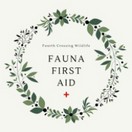
Living with Brushtail Possums
by Linda Dennis and Parks and Wildlife Service, Tasmania
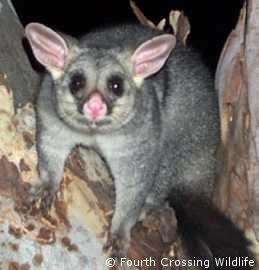 Brushtail Possum at Fourth Crossing 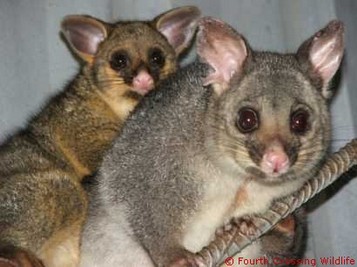 Brushtail Possum and joey, Fourth Crossing 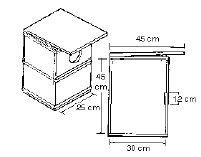 Possum Box Design, by Parks and Wildlife Service, Tasmania 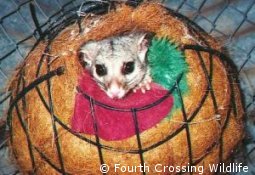 This type of nestbox is cheap to make. It is simply two wired pot plant holders tied together with a hole cut in both ends (the second for an escape hole). However, it is not waterproof and will need to be placed under shelter. 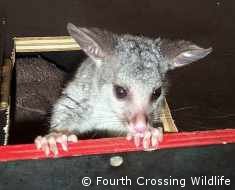 Zen, raised and released at Fourth Crossing  Pickles, release a Fourth Crossing | The lively Brushtail Possum is one of Australia's most familiar marsupials, largely because they are highly adaptable to a wide range of natural and human environments. Their natural and preferred habitat is forest, where they nest in tree hollows, however they will also cohabit with humans in cities and towns where they seek shelter, warmth and protection in the dark recesses of buildings. A favoured spot is between the ceiling and the roof and this can be a problem to some people. Keep reading to find out what you can do to make living with possums easier…... Possums in your home. Is that noise in the ceiling a Brushtail Possum? Many times, the intruder turns out to be an introduced rat or mouse, which are declared pests. Sometimes both types of animals are involved and separate action is required. The following signs might help: Rats and mice make scratching, chewing and skittering noises. They have distinctive droppings; do not defecate where they are nesting and may chew electrical wiring. Rats also collect seeds and grasses. Brushtails do not. They make loud heavy, thumping sounds when walking, and distinctive guttural growls, screeches, hisses and coughs when disturbed. You can find out for sure by looking inside the ceiling with a flashlight during the day or observe your house just on dark when the possum emerges to feed. Possum Proofing. Catching and removing the animal never works - not because the Brushtail finds its way back but because it is replaced by another from nearby. We could go on removing them forever! Brushtails are strongly attached to their homesites and those which have been removed usually face a slow death, either because the release area is unsuitable or it is occupied by another Brushtail which will defend its territory vigorously. Conflict for food and shelter usually means that the released possum dies. Whilst people object to Brushtails living in ceilings or under floors, most wish them no harm. Since possums' chances of survival are best in their own territory, the following strategy is suggested: • Find where the Brushtail is getting in and out. More than one place may be involved. • Make the necessary repairs to prevent entry. This can be done on a fine night between dusk and 10 pm when the Brushtail Possum is outside feeding. On wet and windy nights, a Brushtail may leave later. Repairs need to be sound as Brushtails are quite strong and will work hard to re-enter their shelter site. They can squeeze through a 9 centimetre gap and are able to move loose tiles aside! If the Brushtail has been trapped inside, its noisy attempts to escape will alert you. • Alternatively, repairs can be done during the day. The Brushtail(s) must then be trapped inside the ceiling. Use sliced apple with a dash of vanilla as bait. Don't forget to gain permission from your local National Parks Ranger first. • Liberally splash the old entry areas with a strong smelling substance such as disinfectant, camphor or naphthalene to destroy the scent, otherwise the possum will try and re-enter. • If you do not hear the Brushtail for a few nights it has probably found a new home. • Brushtails can be encouraged to stay in your yard by providing a nesting box, either a hollow log blocked at one end or a home-made nest (see diagram). It should be waterproof and placed four to five metres above the ground. Possums on the Farm and in the Garden. Wildlife experts encourage people to try preventative methods before more drastic methods of Brushtail Possum removal is allowed. If these methods fail, and serious economic damage is occurring, please contact your local wildlife organisation or National Parks office for help. Preventative Planting. If planning a garden, try and select plant species which are unpalatable to Brushtails such as prickly and spiny grevilleas and hakeas; tough and woody banksias and melaleucas (teatree) and plants with smelly foliage such as chrysanthemums, mint bushes, geraniums and daisies. Roses and fruit trees can be ruined unless protected. Trees can be protected by attaching a broad 40 cm band of metal around the trunk, 50 cm above the ground. Make sure that the Brushtail cannot gain access from nearby trees! Orphaned or Injured Brushtail Possums. Orphaned or injured Brushtail Possums, known as joeys, are often found. For any assistance with an orphaned joey please contact your local wildlife organisation, individual carer or vet. For short term care information visit Short Term Care for Brushtail Possums, and for Sonya Stanvic's great care guide visit Possums, Juvenile to Adult where you can download the guide free of charge. Repellents. There are a range of chemical repellents which can be applied to individual trees or shrubs for temporary protection against Brushtail and other possums. They are applied to the bark or foliage depending on the type of repellent used. It must be remembered that repellents give only short-term protection and give no protection to new growth. Repellents will never work on plants that are very attractive to animals. The most common repellents are: • Egg powder. Mix 200 g dried egg powder per litre of water with wetting agent and spray plants. This treatment is more effective than most but may cause leaf death if the plants are suffering from water stress. • Blood and bone. Place it at the base of plants. This substancemay attract dogs to the area because they like to eat the blood and bone. • Mutton fat and kerosene. Mix nine parts melted fat with one part kerosene and leave to cool. The mixture is wiped lightly onto the stem and lower branches. Avoid the leaves as this treatment may cause browning on some species. • Quassia chips extracts. Add 100 g of chips to 400 ml boiling water. Leave to stand for five minutes then add one litre of cold water and leave chips soaking for 24 hours. Strain and add wetting agent (ie: detergent) which will help the mixture stick to the plant. Spray mixture onto plants. • The two most effective repellents available are egg powder and mutton fat mixed with kerosene even though both can cause some damage to the plants. Handle With Care. Remember, Brushtail Possums are wild animals and though they look cuddly they can bite and scratch severely, especially when injured or afraid. Wear protective gloves or restrain the possum in a blanket or towel if you need to handle it. Possum Conservation. Conservation is important even for common animals like the Brushtail possum. You can help by retaining areas of natural bush on your land and by learning to live with these animals. This information has been used with kind permission from the Parks and Wildlife Service, Tasmania web site www.parks.tas.gov.au |
Living with Brush-tail Possums
The PDF file is 186kb



